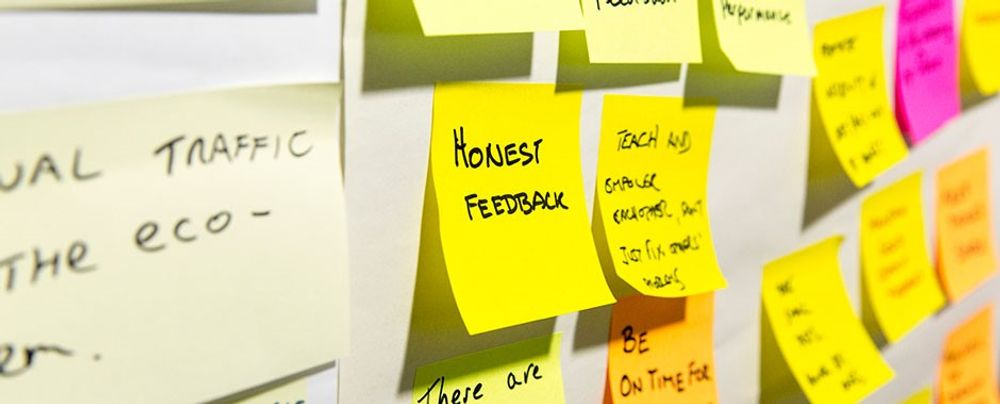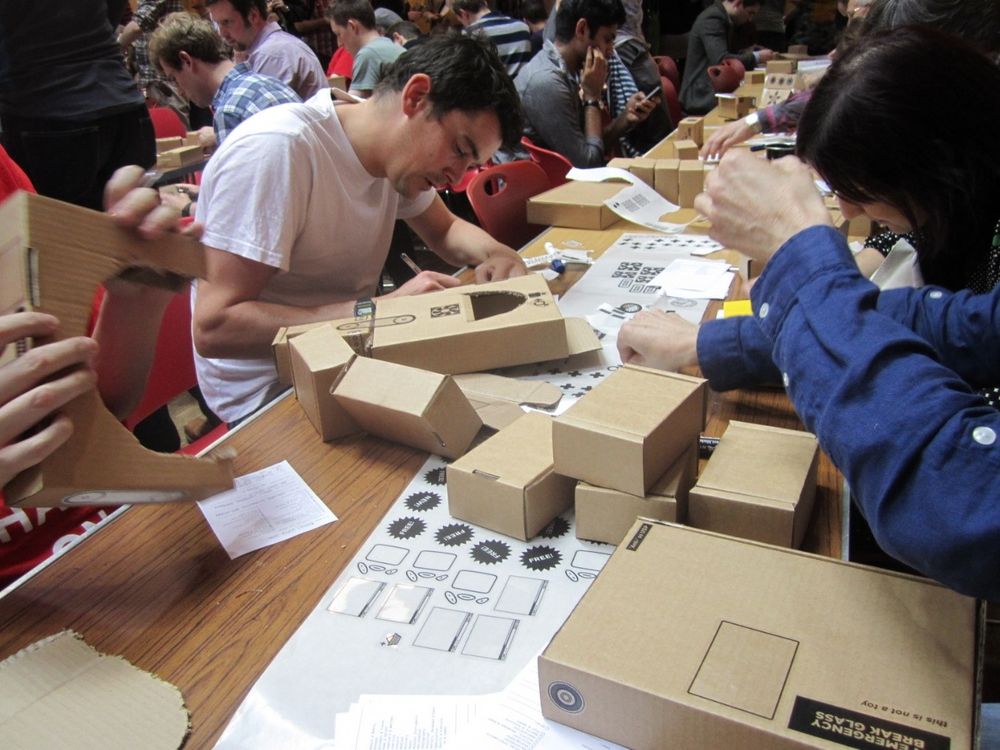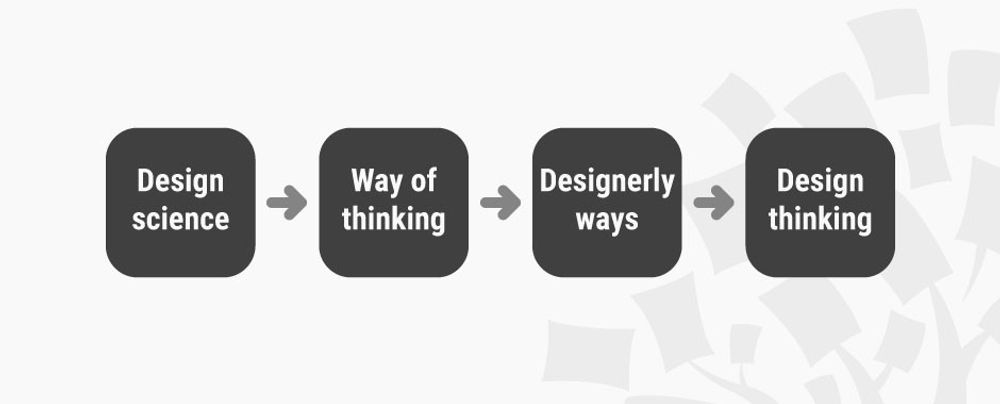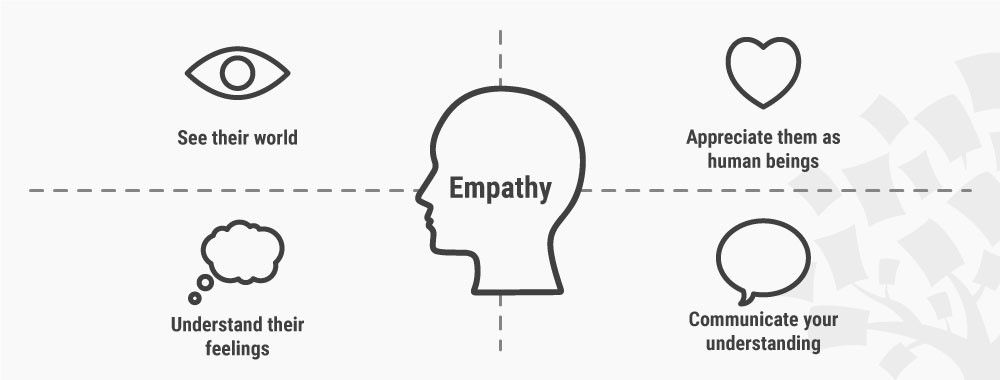Empathy is the ability to understand and identify with another person’s context, emotions, goals and motivations. In order to design great experiences, successful design firms actively search for empathic insights into their target group. In a design context, empathy serves a distinct purpose: to inspire design decisions in the early stages of the process. At IDEO, for example, the design team is so convinced about the positive effect it has on their projects that they actively advocate it to inspire other designers and innovators. Here, you’ll learn how you can develop empathy for your target group.
Using empathy in the design process is on the one hand about collecting subjective information and on the other hand about objectively analysing it. The best way to collect the subjective information is to embed yourself in the context of your target group and gain personal insights into the experiences they have. There are three different approaches for you to use:
Looking at what people do
Asking people to participate
Trying things yourself
You should use them together to get empathic on an affective and a cognitive level. We will explain these approaches and how to use them. But first, we’ll take a closer look at the role of empathy in the design process and the four general steps you need to take in developing empathy for your target group.
“Design empathy is an approach that draws upon people’s real-world experiences to address modern challenges. When companies allow a deep emotional understanding of people’s needs to inspire them—and transform their work, their teams, and even their organization at large—they unlock the creative capacity for innovation.”
— Katja Battarbee, Jane Fulton Suri, and Suzanne Gibbs Howard from IDEO, 2014
Why is Empathy Important in a Design Process?
By the mid-2010s, the design profession had experienced another major shift. Once, the move had taken it from designing products to services; by this point, however, designing experiences was the name of the game. Each shift means that you design for a broader perspective, and each shift builds upon the existing knowledge of the previous perspective. Take biking, for example. In the past, when you wanted to make a biking trip, you had to get a map of the area: the simple product which you could use to plan your own route. Later, services started to appear that would take this planning work out of your hands. You could go to a place (online or in the real world) to have a route planned based on your preferences. Now, when planning a biking trip, you can join an online bike community. You can get inspired by other peoples’ experiences and share routes.
 Author/Copyright holder: Bureau of Land Management. Copyright terms and licence: CC BY 2.0
Author/Copyright holder: Bureau of Land Management. Copyright terms and licence: CC BY 2.0
Biking is an example of how the design profession has shifted from designing products, to services and now, experiences. Now, when planning a biking trip, you can join an online bike community and get inspired by other peoples’ experiences. This shift results in a bigger importance for developing empathy for your target group.
In order to design not only products and services but also experiences, you need to know different things about your users than you would if you were merely designing products. When you learn about people on an objective level, you can understand what they need for performing their tasks. When you learn about your target group on a subjective level, you can understand what they are aiming for and what they are feeling when they are trying to accomplish it. You need the latter for designing experiences. In the bike example, it is—therefore—less important to understand what steps people take to plan a biking trip than it is to know what emotions they would like to associate with it. Getting empathic insights is key in this process.
“The aim of empathic design studies is not to seek solutions for recognized problems, but rather to look for design opportunities as well as develop a holistic understanding of the users. Design empathy is not only information and facts but also inspiration and food for ideas.”
— Tuuli Mattelmäki, Finnish industrial designer, researcher & lecturer, 2003
The Four Steps in Developing Empathy for your Target Group
As we mentioned before, there are three approaches to collecting the subjective information that you need so as to gain empathy for your target group. Each approach involves four general steps. According to Froukje Sleeswijk-Visser, design researcher and co-creator of the context mapping method (a method that allows you to gather deep insights into what people feel and dream), these steps are:
Discovery: enter the user’s world and make contact with the user. This will help you get into the right mind-set to understand the user. Let’s say you’re designing a new workflow for employees working at a self-service food court to improve their efficiency. Maybe you have never exchanged more than a few words with the people behind the counters of a self-service food court. You don’t know them. Walking around behind the scenes and getting a glimpse of the hours they put in and the limited space they have to move around in helps you get into the right mind-set. It triggers your designer’s curiosity.
Immersion: wander around in the user’s world to collect qualitative data. This helps you take the user’s point of reference. When you start to collect data actively by participating as a member of the food court team, talking to them during coffee breaks and taking pictures of things that stand out to you, you start to experience the context from your users’ point of view.
Connection: resonate with the user, and recall your own experiences to connect and create meaning. This step may occur naturally while collecting the data. For example, when you find out how irritated the employees are by the lack of communication about changing menus and special offers, you might recall how it felt when you were in design school and teachers forgot to communicate clearly about changing mandatory literature for the next exam! Not having the right information to do your job properly may lead to a feeling of helplessness. You remember how it feels. You understand and identify with their context and feelings. You have empathic insights.
Detachment: step back into the role of designer, reflect and create ideas. While it may seem sufficient to get the empathic insights by following the previous steps, you need to look at your subjective data with a designer’s mind so as to translate the empathic insights into ideas. A feeling of frustration about the lack of communication may seem solvable by actions directed at the team manager at first. Even so, after creating an overview of the insights and reflecting on it more objectively, you can use the informal communication that is already used between team members to create solutions that will give them a stronger feeling of control.
 Author/Copyright holder: Ryan Lackey. Copyright terms and licence: CC BY 2.0
Author/Copyright holder: Ryan Lackey. Copyright terms and licence: CC BY 2.0
When you’re designing a new workflow, for example for employees working at a self-service food court to improve their efficiency, you need to get empathic insights so as to understand who you’re designing for. In the discovery step, you just wander around to trigger your curiosity. In the immersion step, you start to collect qualitative data in the user’s context. In the connection step, you start to create meaning from the data you gather, by connecting them to your own experiences. You finally step back into the role of the designer to reflect and create ideas in the detachment step.
These steps reflect the balance you need between collecting subjective information on the one hand and objectively analysing it on the other. However, these steps are not terms that you are likely to use when you are trying to organise time and resources around the design research phase of a project. Rather than talking about immersion and detachment, you will be speaking in terms of collecting and analysing the qualitative data. Collecting information from your target group is the overlap between the immersion and connection steps. Analysis of the collected data is the detachment step. From here on, we will use these simpler terms and explain how to perform these steps in more detail.
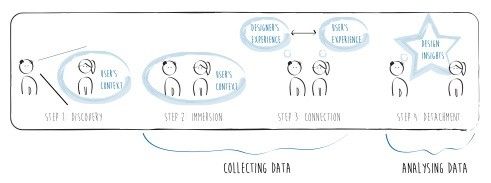
Author/Copyright holder: Priscilla Esser and Interaction Design Foundation.
The four steps in developing empathy for your target group are discovery, immersion, connection and detachment. In your day-to-day design process, you’re more likely to refer to these steps as collecting and analysing data. Adapted from Merlijn Kouprie and Froukje Sleeswijk-Visser, “A Framework for Empathy in Design: Stepping in and out of the User’s Life”. Journal of Engineering Design Vol. 20, No. 5, October 2009, 437–448
How to Collect the Data You Need to Develop Empathy
Jane Fulton Suri, partner emeritus and executive design director at IDEO, describes that collecting information by embedding yourself in the user’s context (the 2nd step, Immersion, and the 3rd step, Connection) can happen in three ways:
Looking at what people really do in their current natural context or with prototypes you expose to them — This is a matter of observation of behaviours, interactions and products. Depending on the design assignment, you can plan to focus on certain aspects of the context. In any case, you will record your observations for further analysis and communication. You can do this by using notes, sketches of routes on maps, photographs, videos, etc. For example, mapping medical equipment and nurses on a hospital ward can lead to insights into how to improve the efficiency of workflows which your target audience will experience. And recording a video of walking a route through a government building at the eye-level height of a wheelchair user can lead to insights into how to improve the experience of accessibility.
Asking people to participate by recording their behaviour and context or by expressing their thoughts and feelings — You can do this without embedding yourself in the user’s context by using a probes kit for context mapping (a collection of exercises designers give to a target group in a design project so as to obtain an understanding of their lives). However, embedding yourself in a context when asking people to participate may give deeper insights. For example, you might have seniors in a nursing home hand out cards with a pre-printed message which thanks the recipient, typically—in this case—a caregiver, an administration person or a member of the ancillary services (e.g., a janitor or cook). You could walk around with them when they give each one to a person they choose, thereby giving you enormous insights into the reasons behind their choices and the interactions these generate. Also here, you should use recording methods, such as filming or photographing, to preserve the data for later use.
Trying things yourself: to gain personal insights into the kinds of experiences others may have — This method is most time-consuming, but it may lead to different and more emotional insights. Resonating with the user on an emotional level may be easiest when you, for example, clean toilets in an office building for a few days and experience the mess people leave behind and the times people don’t greet you like they do their colleagues. It is possibly the most difficult data to capture, but diary-style notes can be a good basis.
While all three approaches focus on gaining empathy, the first is more objective (more focused on cognitive aspects) and the last more subjective (more focused on affective aspects). Both are relevant in connecting with your users, so a mix of approaches will be most useful.
 Author/Copyright holder: Nate Grigg. Copyright terms and licence: CC BY 2.0
Author/Copyright holder: Nate Grigg. Copyright terms and licence: CC BY 2.0
Trying things yourself is a very powerful way to develop empathy. It lets you focus on how it feels to be the user. Sometimes, when the target group has specific physical characteristics, we—as the designers involved—might even need special suits so as to step into the user’s shoes more profoundly. Such suits exist for pregnant women or elderly people.
Regardless of which mix of approaches you choose, selecting the right people and contexts to include in the data collection is important. All embedded approaches to collecting data for empathy take a substantial amount of time. Therefore, it is always more useful to focus on purpose than statistics when selecting the people and contexts to include in the data collection. For example, if you had a design project to improve the integration of immigrant children at school, you could embed yourself in a primary school class with two or three immigrant children. Looking at what the children do as well as how they interact and asking them to express their thoughts and feelings could give you valuable insights. You could even participate by taking the role of the school teacher for a day. This embedded research will easily take you a week of intensive data collection. Statistically, you would not be able to come to solid conclusions. However, as you’re interested in the insights from a design research perspective and need these to generate design ideas, the conclusions are very valuable. Having a statistically sound sample of more than one class or three immigrant children would simply take too much time without adding to the value of insights. So that they can still convince stakeholders of the relevance of findings, design teams at IDEO use data from desk research to back up the insights.
How to Analyse the Data Needed so as to Develop Empathy
The data you collect is very diverse, from personal impressions to pictures, quotes, maps and sketches. When analysing, your focus is on finding patterns or clusters that ‘stand out’ in some way as being an opportunity for design. For these patterns or clusters to emerge, you need to use your designer’s intuition, but you can help it along with techniques borrowed from qualitative research methods.
Best practice for an analysis process:
Gather all data into one room. Lay the materials out on tables and walls so you can see everything. Get two or three members of your design team together for the analysis.
Look at the data and start to see if some have similar themes. You can base these themes on underlying problems, recurrence of negative feelings, or anything else that sticks out and seems relevant to your design problem. Don’t worry if you find it difficult at first. This step in the analysis process will get better with experience. Stick with it.
Label or cluster your data into categories, based on the themes you find. Use sticky notes and markers in different colours to indicate which pieces of data belong together.
Summarise the findings. At first, this could be an unorganised list of all conclusions. Then, you may add a hierarchy or (again) categories. Finally, you can summarise the findings in personas, requirements, mental models, scenarios, flowcharts or graphs. This will allow you to use the insights in any step of the remaining process and communicate them to stakeholders.
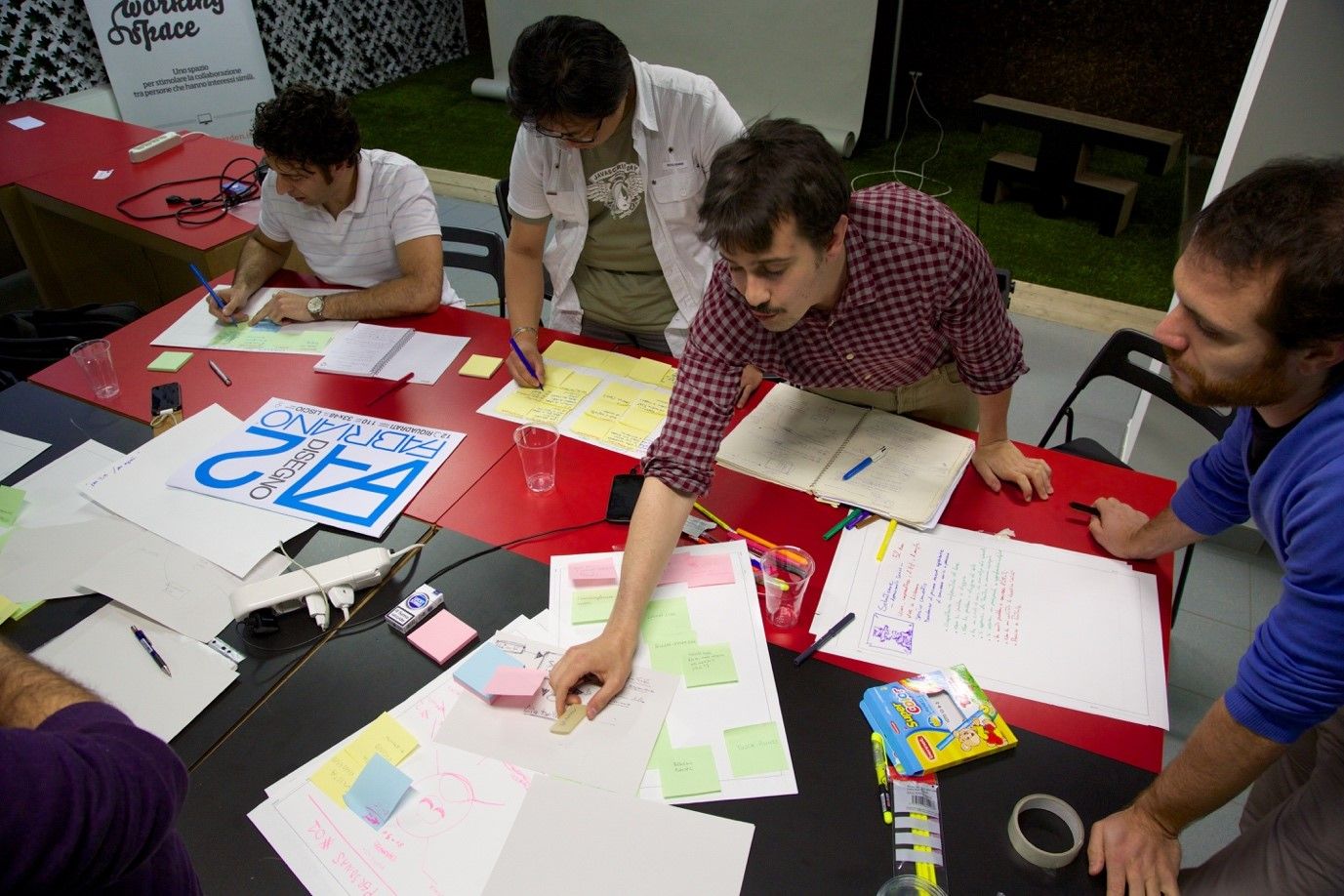 Author/Copyright holder: Luca Mascaro. Copyright terms and licence: CC BY-SA 2.0
Author/Copyright holder: Luca Mascaro. Copyright terms and licence: CC BY-SA 2.0
Analysing the qualitative data from embedded research is best done with a few designers, to allow discussion. Using different colours of sticky notes and markers, you and your fellow designers can indicate themes to create an overview.
The Take Away
In order to design great experiences, you need empathic insights. It is important to balance the steps of collecting subjective insights with objective reasoning and analysis. The best way to collect the subjective information is to embed yourself in the context of your target group and gain personal insights into the experiences they have. Three different approaches are available to you. Together, they enable you to get empathic on an affective and a cognitive level: observing people, asking them to express themselves and experiencing things yourself. You should take four steps in each approach: discovery, immersion, connection and detachment. When analysing the collected data, you can borrow techniques from traditional qualitative research and apply them so as to find opportunities for design. If you’re especially attentive and careful throughout these processes, you may access powerful insights into your target group’s way of seeing the world.
References & Where to Learn More
Jane Fulton Suri, Empathic Design: Informed and Inspired by Other People’s Experience. In: Ilpo Koskinen, Katja Battarbee, and Tuuli Mattelmäki, eds. Empathic Design: User Experience in Product Design, 2003
Katja Battarbee, Jane Fulton Suri and Suzanne Gibbs Howard, Empathy on the edge: Scaling and Sustaining a Human-Centered Approach in the Evolving Practice of Design, 2014
Merlijn Kouprie and Froukje Sleeswijk-Visser, “A Framework for Empathy in Design: Stepping in and out of the User’s Life”. Journal of Engineering Design Vol. 20, No. 5, October 2009, 437–448




